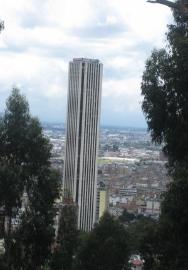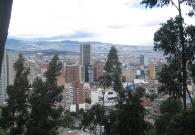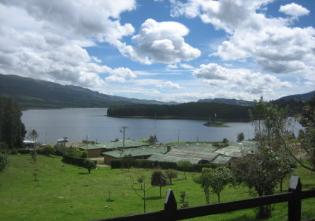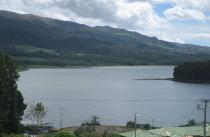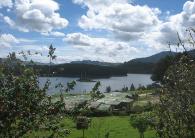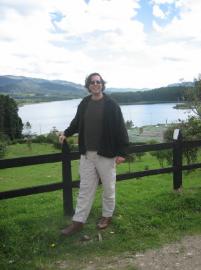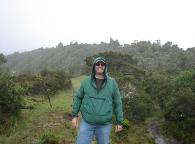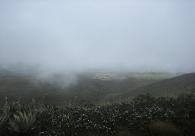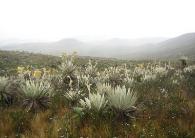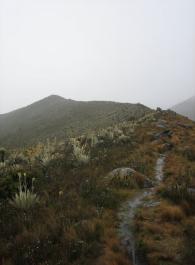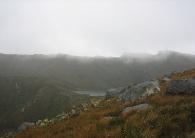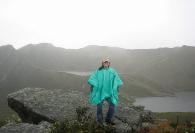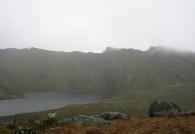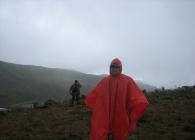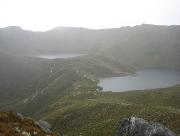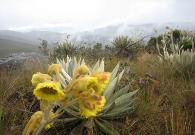Well, it’s another one of those, “What the heck am I doing here moments.” It’s 6 p.m.
on Monday evening, the sun is setting, and I’m sitting outside the visitor's guest
house in the middle of the Escuela de Fuerzas Especial de Colombia. For those of
you who don’t read Spanish, that’s the Colombian Special Forces School – and if
there was any doubt - there is absolutely no relation to the Ivy League University on
the Upper West side of Manhattan.
So, here’s the deal. I bet most of you didn’t realize that in Colombia three people are
killed or injured by landmines every day. Yep, Colombia is second only to
Afghanistan and Cambodia in that unfortunate statistic. Colombia is certainly safer
today than it was just a few years ago, but there is a still a lingering conflict centered
mainly in the rural areas that include guerrilla forces, nacro-trafficking, and
landmines.
Last year after doing some trauma training and emergency medical assessments in
Ecuador, I was asked by the Organization of American States (OAS) if I would be
interested in doing a similar mission in Colombia. Those of you that know me
certainly know the answer to that one.
Having arrived here in early August, I have made the rounds of the country. I visited
and lectured at four of the major hospitals in Colombia: Hospital Universitario
Fundación de Santa Fe, Bogota; Hospital Central Militar, Bogota; Hospital
Universitario San Vicente de Paul, Medellin; and Hospital Universitario de Valle, Cali.
My talk covered the emergency management of landmine and UXO (unexploded
ordinance) injuries – but basically I felt a little bit somewhere between the proverbial
bringing coal to Newcastle and preaching to the choir. Colombia has been in conflict
for about 40 years. Their surgeons and medical facilities are excellent; some of the
finest trauma and war surgeons are here in Colombia. So what the heck did I have to
offer?
What I offered is experience from working in 10 landmine affected countries, a
different prospective on dealing with the topic of landmines, and I created a bit of a
stir and interest in this difficult problem.
The OAS has been involved in assisting the Colombian military in establishing a
Humanitarian Demining program. They offer technical assistance, military observers,
and support with equipment and supplies. In Colombia there is also an Antipersonal
Mine Observatory. The Observatorio is part of the Vice President’s Office, and the
Vice President’s wife is very concerned with the issue. It has been wonderful to work
with them and see what they are doing.
In addition to coordinating the landmine problem in Colombia, the Observatorio is in
the process of developing surveys of pre-hospital and hospital care of victims, and
protocols for the management of landmine injuries. These may seem like simple
tasks that have already been done, but to date they do not exist in Colombia. I have
been very encouraged by the work that is being done, especially by two young
doctors, Carlos and David, who have put in many hours to see these projects
progress.
Now in addition to the assessments (and yes, that’s what I’m doing here at the
Special Forces School – in the middle of the jungle), I’ve also done some teaching.
Last weekend, Carlos, one of the Observatorio doctors, and I went to the Tolemaida
Army base about two hours outside of Bogota and did a trauma refresher class (Mine
Injury and Trauma Seminar) for about 70 combat nurses and doctors. On Friday I
gave the class to 24 demining nurses.
In addition to the hospital assessments and the classes I’ve also been able to get out
to some of the demining sites. As Colombia is a signatory to the Ottawa treaty they
are mandated under international law to remove all landmines that are in place. That
process is now beginning. One of the problems in Colombia, however, is that the
guerrillas, narco-traffickers, and other criminal elements continue to use landmines;
often to protect their cocoa crops. Another problem is that many of the landmines are
home-made devices instead of the usual industrially produced models - this
complicates the issue of Mine Risk Education and informing the local populace.
Anyway, just so no one worries that I’ve been working too hard, I have had a chance
to explore a bit of Colombia as well. I went hiking up to about 3,500 meters (11,000 ft)
in the pouring rain and had a grand old time; also made it to the Zona Rosa a few
times to partake in some Bogota nightlife – seeing the restaurants and clubs make it
hard to believe that I’m even in Colombia; but then I go back to my hotel which is
surrounded by soldiers with body armor and automatic weapons and I remember
where I am.
on Monday evening, the sun is setting, and I’m sitting outside the visitor's guest
house in the middle of the Escuela de Fuerzas Especial de Colombia. For those of
you who don’t read Spanish, that’s the Colombian Special Forces School – and if
there was any doubt - there is absolutely no relation to the Ivy League University on
the Upper West side of Manhattan.
So, here’s the deal. I bet most of you didn’t realize that in Colombia three people are
killed or injured by landmines every day. Yep, Colombia is second only to
Afghanistan and Cambodia in that unfortunate statistic. Colombia is certainly safer
today than it was just a few years ago, but there is a still a lingering conflict centered
mainly in the rural areas that include guerrilla forces, nacro-trafficking, and
landmines.
Last year after doing some trauma training and emergency medical assessments in
Ecuador, I was asked by the Organization of American States (OAS) if I would be
interested in doing a similar mission in Colombia. Those of you that know me
certainly know the answer to that one.
Having arrived here in early August, I have made the rounds of the country. I visited
and lectured at four of the major hospitals in Colombia: Hospital Universitario
Fundación de Santa Fe, Bogota; Hospital Central Militar, Bogota; Hospital
Universitario San Vicente de Paul, Medellin; and Hospital Universitario de Valle, Cali.
My talk covered the emergency management of landmine and UXO (unexploded
ordinance) injuries – but basically I felt a little bit somewhere between the proverbial
bringing coal to Newcastle and preaching to the choir. Colombia has been in conflict
for about 40 years. Their surgeons and medical facilities are excellent; some of the
finest trauma and war surgeons are here in Colombia. So what the heck did I have to
offer?
What I offered is experience from working in 10 landmine affected countries, a
different prospective on dealing with the topic of landmines, and I created a bit of a
stir and interest in this difficult problem.
The OAS has been involved in assisting the Colombian military in establishing a
Humanitarian Demining program. They offer technical assistance, military observers,
and support with equipment and supplies. In Colombia there is also an Antipersonal
Mine Observatory. The Observatorio is part of the Vice President’s Office, and the
Vice President’s wife is very concerned with the issue. It has been wonderful to work
with them and see what they are doing.
In addition to coordinating the landmine problem in Colombia, the Observatorio is in
the process of developing surveys of pre-hospital and hospital care of victims, and
protocols for the management of landmine injuries. These may seem like simple
tasks that have already been done, but to date they do not exist in Colombia. I have
been very encouraged by the work that is being done, especially by two young
doctors, Carlos and David, who have put in many hours to see these projects
progress.
Now in addition to the assessments (and yes, that’s what I’m doing here at the
Special Forces School – in the middle of the jungle), I’ve also done some teaching.
Last weekend, Carlos, one of the Observatorio doctors, and I went to the Tolemaida
Army base about two hours outside of Bogota and did a trauma refresher class (Mine
Injury and Trauma Seminar) for about 70 combat nurses and doctors. On Friday I
gave the class to 24 demining nurses.
In addition to the hospital assessments and the classes I’ve also been able to get out
to some of the demining sites. As Colombia is a signatory to the Ottawa treaty they
are mandated under international law to remove all landmines that are in place. That
process is now beginning. One of the problems in Colombia, however, is that the
guerrillas, narco-traffickers, and other criminal elements continue to use landmines;
often to protect their cocoa crops. Another problem is that many of the landmines are
home-made devices instead of the usual industrially produced models - this
complicates the issue of Mine Risk Education and informing the local populace.
Anyway, just so no one worries that I’ve been working too hard, I have had a chance
to explore a bit of Colombia as well. I went hiking up to about 3,500 meters (11,000 ft)
in the pouring rain and had a grand old time; also made it to the Zona Rosa a few
times to partake in some Bogota nightlife – seeing the restaurants and clubs make it
hard to believe that I’m even in Colombia; but then I go back to my hotel which is
surrounded by soldiers with body armor and automatic weapons and I remember
where I am.
| Colombia Update |
